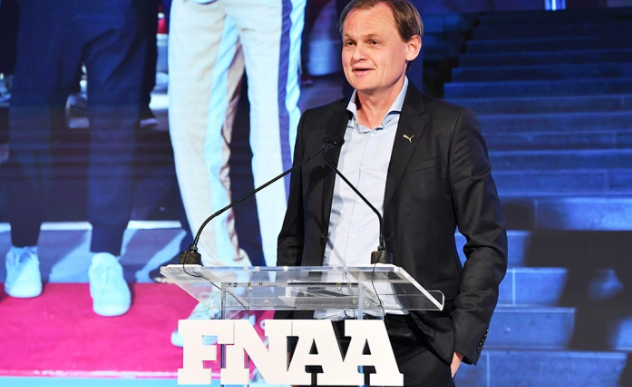Major Athletic Footwear Brands Are Shedding, Trading and Hiring New CEOs
CEO shifts have become common in the last year, but the athletic retail sector is seeing more shuffles than usual.
Adidas, Puma, Foot Locker, Under Armour and Reebok have had top executive transitions within the last six months. These changes have come at an already volatile time for sneaker brands and retailers. Leading brands like Nike and Adidas are pulling out of wholesale retailers in favor of their own DTC channels and have been grappling with tense situations regarding controversial partners. Newer brands like On and Hoka are also reshaping the market, which is reeling from the recent loss of Adidas Yeezy.
“Athletic has gone through a major shift in the industry as much as anybody,” said Craig Rowley, a senior client partner in the consumer sector for consulting firm Korn Ferry. While sports footwear was a must have for home-bound consumers throughout 2020 and part of 2021, momentum in the category has slowed as people return to work and in-person events. This lifestyle shift has muted demand for casual and athletic styles while fueling demand for occasion-based footwear. Just this morning, Kohl’s executives noted on an earnings call how active footwear lagged in Q3, while dress shoes and boots performed well.
Now the industry is at a turning point. In many cases, the new leaders in the space have been hand selected for their experience and fresh perspective on a changing industry — and to get their respective companies back on track.
“Companies are very good at breathing their own exhaust,” said Liza Amlani, principal and founder of consulting company Retail Strategy Group. “It’s usually a good idea to crack open a window and let the fresh air flow.”
In addition to a fresh start, these sudden leadership shifts point to a desire for companies to become more consumer-focused, explained managing director of GlobalData Neil Saunders.
For example, Foot Locker’s new chief executive Mary Dillon, who came from Ulta in September, joined the retailer with a reputation for an “astute focus on the customer and infusing this throughout organizations,” Saunders said. In an August note, Cowen analysts heralded Dillon’s appointment as “an important inflection in sentiment” for Foot Locker, despite a “rapidly evolving and challenging consumer backdrop” that includes brands shifting towards their own DTC platforms, which has been especially impactful to Foot Locker.
Adidas sought another leader who has been laser focused on the consumer, Bjørn Gulden, when they poached the Puma chief this month. Gulden, who led Adidas’ apparel and accessories division in the 90s, also displayed a deep understanding of the consumer during his time at Puma, where he helped lift the company’s annual sales by 5.3 billion euros from fiscal year 2014 through 2022 and led the company’s re-entry into the basketball category.
Nabbing Gulden might have also served a secondary purpose for Adidas as well: weakening the top leadership at Puma, one of its biggest competitors. (11-year company veteran Arne Freundt replaced Gulden at Puma.)
Athletic footwear is not the only retail sector facing CEO shakeups. Other companies like Gap Inc., Bed Bath and Beyond and the RealReal have faced similar leadership changes this year as well. Just last week, Kohl’s CEO Michelle Gass announced her departure to Levi Strauss & Co. as president CEO in waiting.
In total, 16 retail CEOs have left their roles so far this year, according to a Thursday report from executive outplacement firm Challenger, Gray & Christmas; 22 retail CEOs left their roles in 2021.
Outside of CEOs, turnover across all levels of retail is up, a Korn Ferry survey released this week found. Corporate retail turnover is 17.4%, compared to 13.7% in the same time in 2021. Turnover is also up for salaried distribution center workers and hourly in-store positions.
“It’s easier to change jobs today than it ever has been in my career,” Rowley said, emphasizing the amount of available jobs, competitive wages and general feeling of burnout across the industry. “It’s this combination of things that are driving the turnover levels up.”
